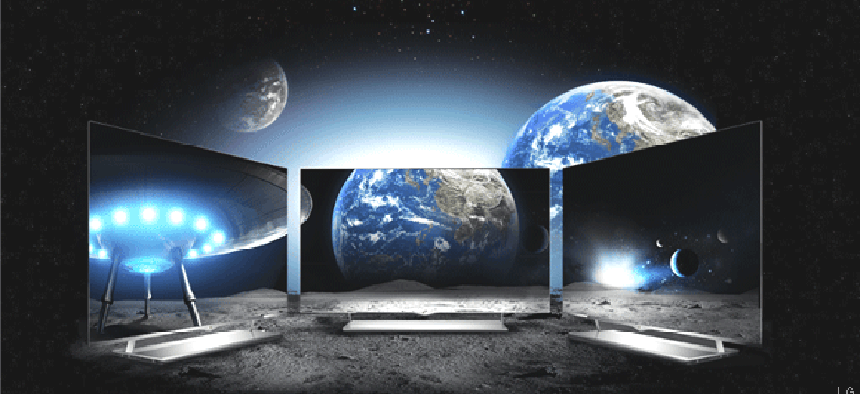Are ultra high-res OLEDs finally ready for their close-up?


Connecting state and local government leaders
The thin, flexible light screens with 4K resolution are four times sharper than LED or LCD monitors, but they could find limited use at first.
OK, I really mean it this time. Last year I predicted that organic light-emitting diode monitors (OLEDs) would make it big in 2012, based on their huge presence at the Consumer Electronic Show.
But they didn’t even make a dent in the market. That’s not really a bad thing, as we were treated to a year of rapidly dropping costs for standard LCD and LED monitors, a trend that I’m sure will continue.
But I still want to see these amazing displays go mainstream. People don’t realize it, but OLEDs actually go back more than 10 years at this point. Their secret is that they use carbon (hence the organic part of the name) to create a paper-thin display. But for years, there were no viable applications for them, mostly due to the limitations associated with OLED technology. The Army even tried to incorporate them into wrist watches at one point, but that didn’t take off.
The problem with OLEDs up until recently has been that the screens die too quickly. Ten years ago, I saw them at CES when they were just sheets of lighted, colored paper. By the end of the show, they were very dim sheets of paper, having lost 20 percent of their brightness each day.
But this year, they are everywhere at CES, with everyone from CNN to Wired reporting about them. Not only are companies able to offer huge screens that are lightweight and about a half-inch thick, but the detail displayed is four times as great as the highest-end LED HDTV available today. And every company that makes displays has at least one new OLED model slated to come out this year.
The new OLEDs feature 4K resolution, a term that refers to the horizontal resolution of the screen. Depending on the product, the screens are reported to have resolutions from 3,840 by 2,160 pixels to 4,352 by 2,176 pixels, drastically higher than the 1,800-pixel horizontal resolution standard in current screens.
Now the biggest obstacle to widespread adoptions isn’t technology, but price. Especially for cash-conscious government agencies, it’s going to be a stretch to justify buying one. Although few at CES seem to want to put an official price on the OLEDs, LG told Mashable its 55-inch TV, due to arrive in March, will go for $12,000. Another vendor at CES told a reporter that a 24-inch model could cost that much.
While they're not likely to be widely adopted in agencies, at least until prices come way down, these high-res screens could prove useful in offices at the Defense Department, NASA and other agencies that could leverage the extreme detail in, say, satellite or aerial photos.
But at least they will hit the market soon. Rich movie stars can buy them for their home entertainment centers, and prices will eventually come down.
Meanwhile, these changes in the display market will have an effect on the rest of us. The nearly bottoming-out prices for standard LCD and LEDs is going to go down even further. Over the recent holidays, 60-inch displays were going for $899 and 32-inch panels sold for under $100. With OLEDs being the next big thing, prices for that older tech are going to drop even more. Be ready to scoop them up.




